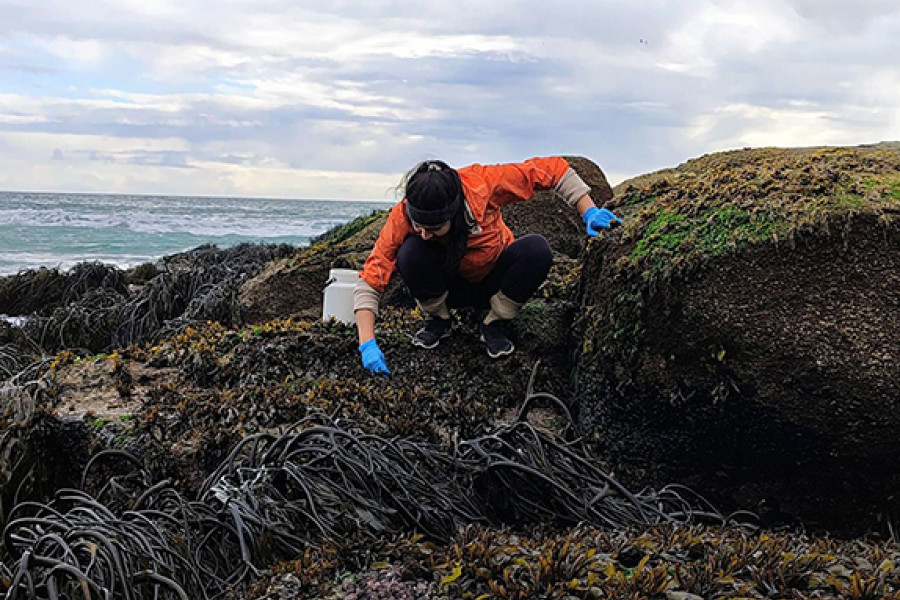“This paper is very special for me because it represents the end of a stage of my career as a scientist,” said Dr. Alejandra Moenne Muñoz, an academic from the Faculty of Chemistry and Biology, after the results of the research she led clarified the mechanism of copper accumulation in the algae.
“Copper Is Accumulated as Copper Sulfide Particles, and Not Bound to Glutathione, Phytochelatins or Metallothioneins, in the Marine Alga Ulva compressa (Chlorophyta)”, published in the International Journal of Molecular Sciences in July, is the result of more than 20 years of work with his team studying the mechanisms of copper tolerance and accumulation in the marine alga Ulva compressa.
The article overturns initial assumptions that “the algae should accumulate copper as it occurs in terrestrial plants, i.e. by binding to glutathione, glutathione peptides called phytochelatins and/or small cysteine-rich proteins called metallothioneins”.
“This turned out to be incorrect, given that copper was shown to be accumulated as insoluble copper sulfide nanoparticles, a mechanism found mainly in bacteria,” said the researcher from the Marine Biotechnology Laboratory, about the research with the participation of Stephanie Romero, Alberto González, Héctor Osorio and Rodrigo Segura.
As for the projections of her work, the Biology Department researcher of the Universidad de Santiago explained that she is working on a project to “analyze whether the algae can accumulate lanthanide sulfide, mainly neodymium sulfide, to be used as supercapacitors in photovoltaic cells, which transform sunlight into electricity”.
“This metal and its sulfide also have ferromagnetic properties, which may enable their purification from an extract of the algae using a magnet,” she added.


